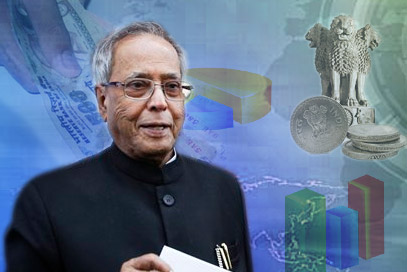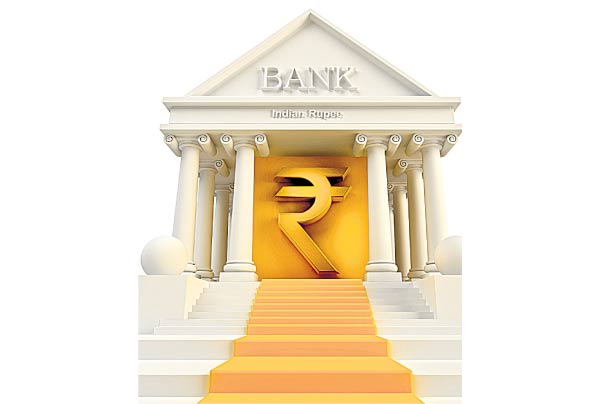
Highlights of Union Budget 2012-13:
•The income tax exemption limit has been raised to Rs 2 lakh. From Rs.2 lakh to Rs.5 Lakh-10%. From Rs. 5 lakh to Rs.10 Lakh-20 %. Above Rs.10 Lakh-30%.
•The service tax rate has been raised to 12% from 10%
.Excise duty raised from 10 to 12%.
•Deduction of upto Rs 10,000 from interest from savings bank account.
.A new scheme called Rajiv Gandhi Equity Savings scheme, is proposed in the Union Budget 2012-13.New investors with income below Rs 10 lakh can buy stocks up to Rs 50,000 into direct equity market.The scheme will have lock-in period of three years. You get an income tax deduction of 50% of Rs.50000 (Rs 25000).Hold this investment for three years to save
a tax over above 80c deduction.
.Deduction of Rs.20000/-on investment made in infrastructure bond u/s 80C(over & above Rs.1 Lakh) is discontinued.
•No change in corporate taxes.
•Cinema industry has been exempted from service tax.
•The branded silver jewellery has been fully exempted from excise duty.
•Integrated Child Development Scheme to be strengthened and restructured with an allocation of Rs 1,185 crore.
•Infusion of Rs 15,888 crore in public sector banks, regional rural banks and NABARD in 2012-13.
•Allocation of Rs 14,000 crore for rural water supply and sanitation.
•Completion of highway projects 44% higher than in previous fiscal.
•Hope to raise Rs 30,000 crore from disinvestments.
•Growth in 2012-13 estimated at 7.6%, expect inflation to be lower.
•Current account deficit 3.6% in 2011-12, this puts pressure on exchange rate.
•GDP growth in 2011-12 estimated at 6.9%, had to battle double digit inflation for 2 years

Definition & meaning of some banking terminologies
1) What is Repo rate ?
It is the rate at which Reserve bank of India lend short term money to Banks against securities.When the repo rate increases borrowing from RBI becomes more expensive & When repo rate decreases borrowing from RBI becomes cheap. RBI normally resort to changing the repo rate in order to control the flow of money supply for controlling inflation.
Whenever the banks have any shortage of funds they can borrow it from RBI.
2) What is Reverse Repo rate? Reverse Repo rate is the rate at which banks park their short-term excess liquidity with the RBI. The banks use this tool when they feel that they are stuck with excess funds and are not able to invest anywhere for reasonable returns. An increase in the reverse repo rate means that the RBI is ready to borrow money from the banks at a higher rate of interest. As a result, banks would prefer to keep more and more surplus funds with RBI.
An increase in Reverse repo rate can cause the banks to transfer more funds to RBI due to this attractive interest rates. It can cause the money to be drawn out of the banking system.
3)What is CRR(Cash reserve ratio)? Cash reserve Ratio (CRR) is the amount of funds that the banks have to keep with RBI. If RBI decides to increase the percent of this, the available amount with the banks comes down. The Reserve Bank of India (Amendment) Bill, 2006 has been enacted and has come into force with its gazette notification. Consequent upon amendment to sub-Section 42(1), the Reserve Bank, having regard to the needs of securing the monetary stability in the country, RBI can prescribe Cash Reserve Ratio (CRR) for scheduled banks without any floor rate or ceiling rate ( [Before the enactment of this amendment, in terms of Section 42(1) of the RBI Act, the Reserve Bank could prescribe CRR for scheduled banks between 3 per cent and 20 per cent of total of their demand and time liabilities].
RBI uses CRR either to drain excess liquidity or to release funds needed for the growth of the economy from time to time. Increase in CRR means that banks have less funds available and money is sucked out of circulation.
4) What is SLR(Statutory Liquidity ratio)?
Every bank is required to maintain at the close of business every day, a minimum proportion of their Net Demand and Time Liabilities as liquid assets in the form of cash, gold and un-encumbered approved securities. The ratio of liquid assets to demand and time liabilities is known as Statutory Liquidity Ratio (SLR). RBI is empowered to increase this ratio up to 40%. An increase in SLR also restrict the bank’s leverage position to pump more money into the economy. SLR (Statutory Liquidity Ratio) is the amount a commercial bank needs to maintain in the form of cash, or gold or govt. approved securities (Bonds) before providing credit to its customers. SLR rate is determined and maintained by the RBI (Reserve Bank of India) in order to control the expansion of bank credit.
How is SLR determined? SLR is determined as the percentage of total demand and percentage of time liabilities. Time Liabilities are the liabilities a commercial bank liable to pay to the customers on their anytime demand.
What is the Need of SLR? With the SLR (Statutory Liquidity Ratio), the RBI can ensure the solvency a commercial bank. It is also helpful to control the expansion of Bank Credits. By changing the SLR rates, RBI can increase or decrease bank credit expansion. Also through SLR, RBI compels the commercial banks to invest in government securities like government bonds
Source TOI dated-10-03-2011
 Home Loan
Home LoanTypes of home loan-
a)Step-up repayment: In this case repayment EMI are smaller in initial years & increases as the year progresses.
b) Tranc-based EMI: In case you buy a property under construction, you have to pay intt. on partial disbursement. The min. amount you have to pay is the simple interest on the loan disbursed.
c) Flexible loan instalment: In such scheme EMI's are higher in initial years of loan. It reduces towards end of the tenure.
d) Accelerated repayment: This allows the borrower to increase the EMI to repay the loan faster.
Prepayment of home loan: If the interest on home loan is higher than that being earned by your investment then it is advisable to repay the home loan.
Tax benefits: Home loan tax benefits are offered only in case of built property. Tax benefits on interest paid till the completion of the construction of house property is not allowed. It is allowed u/s 24(b) in 5 equal instalment after the construction is completed. The limit of deduction in a year is Rs.1.50 lacs.
Principal amount of home loan is eligible for tax deduction u/s 80C of the I.T Act 11961 upto Rs.1.00 lacs.
Tax benefits u/s24(b) as well as an exemption for the HRA received is available to a borrower, if he has purchased house in a city different from the city where he lives & he pays rent for the rented accommodation.
If you sell a property within 3 years of buying it, any gain will be treated as short term capital gains.
If it is sold within 5 years from the end of the financial year during which it was bought, the tax deduction claimed will be added to the income for that particular year.



